Regulated accumulation of desmosterol integrates macrophage lipid metabolism and inflammatory responses
- PMID: 23021221
- PMCID: PMC3464914
- DOI: 10.1016/j.cell.2012.06.054
Regulated accumulation of desmosterol integrates macrophage lipid metabolism and inflammatory responses
Abstract
Inflammation and macrophage foam cells are characteristic features of atherosclerotic lesions, but the mechanisms linking cholesterol accumulation to inflammation and LXR-dependent response pathways are poorly understood. To investigate this relationship, we utilized lipidomic and transcriptomic methods to evaluate the effect of diet and LDL receptor genotype on macrophage foam cell formation within the peritoneal cavities of mice. Foam cell formation was associated with significant changes in hundreds of lipid species and unexpected suppression, rather than activation, of inflammatory gene expression. We provide evidence that regulated accumulation of desmosterol underlies many of the homeostatic responses, including activation of LXR target genes, inhibition of SREBP target genes, selective reprogramming of fatty acid metabolism, and suppression of inflammatory-response genes, observed in macrophage foam cells. These observations suggest that macrophage activation in atherosclerotic lesions results from extrinsic, proinflammatory signals generated within the artery wall that suppress homeostatic and anti-inflammatory functions of desmosterol.
Copyright © 2012 Elsevier Inc. All rights reserved.
Figures
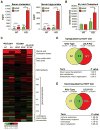
 P<0.001, ‡P<0.01, +P<0.05 (n=5). Error bars represent SEM. B. Total cellular cholesteryl esters in peritoneal macrophages derived from WT or LDLR KO mice fed either NCNF or HCHF diet. P-value notations are the same as A (n=9). C. Heat map of lipid changes in lipid categories. Log2 of ratio values are used in each entry. Red shading indicates up-regulation and green indicates down-regulation. For the subclasses under glycerophospholipids, the abbreviations are: PG (Glycerophosphoglycerols), PE (Glycerophosphoethanolamines), PC (Glycerophosphocholines), PI (Glycerophosphoinositols), PA (Phosphatidic acids), and PS (Glycerophosphoserines). D. Venn diagram of up-regulated genes and their overlap by HCHF diet >1.5× in the transcriptome of WT and LDLR KO macrophages, and p-values for selected GO terms. E. Venn diagram of down-regulated genes and their overlap by HCHF diet >1.5× in the transcriptome of WT and LDLR KO macrophages, and p-values for selected GO terms.
P<0.001, ‡P<0.01, +P<0.05 (n=5). Error bars represent SEM. B. Total cellular cholesteryl esters in peritoneal macrophages derived from WT or LDLR KO mice fed either NCNF or HCHF diet. P-value notations are the same as A (n=9). C. Heat map of lipid changes in lipid categories. Log2 of ratio values are used in each entry. Red shading indicates up-regulation and green indicates down-regulation. For the subclasses under glycerophospholipids, the abbreviations are: PG (Glycerophosphoglycerols), PE (Glycerophosphoethanolamines), PC (Glycerophosphocholines), PI (Glycerophosphoinositols), PA (Phosphatidic acids), and PS (Glycerophosphoserines). D. Venn diagram of up-regulated genes and their overlap by HCHF diet >1.5× in the transcriptome of WT and LDLR KO macrophages, and p-values for selected GO terms. E. Venn diagram of down-regulated genes and their overlap by HCHF diet >1.5× in the transcriptome of WT and LDLR KO macrophages, and p-values for selected GO terms.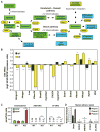
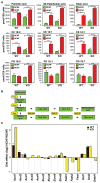
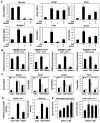
 P<0.001, ‡P<0.01, +P<0.05 versus siCTL. D. Effect of GW3965 and desmosterol treatment on induction of indicated LXR reporter constructs in RAW264.7 cells. E. LC/MS analysis of the effects of desmosterol on cellular contents of 9Z-palmitoleic and oleic acid in peritoneal macrophages. For A, B, D and E ***P<0.001, **P<0.01, *P<0.05 versus control. Error bars represent SD.
P<0.001, ‡P<0.01, +P<0.05 versus siCTL. D. Effect of GW3965 and desmosterol treatment on induction of indicated LXR reporter constructs in RAW264.7 cells. E. LC/MS analysis of the effects of desmosterol on cellular contents of 9Z-palmitoleic and oleic acid in peritoneal macrophages. For A, B, D and E ***P<0.001, **P<0.01, *P<0.05 versus control. Error bars represent SD.
 P<0.001, ‡P<0.01 DKO versus WT. Error bars represent SD.
P<0.001, ‡P<0.01 DKO versus WT. Error bars represent SD.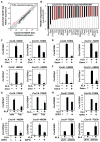

References
-
- Avigan J, Steinberg D, Thompson MJ, Mosettig E. Mechanism of action of MER-29, an inhibitor of cholesterol biosynthesis. Biochem Biophys Res Commun. 1960;2:63–65. - PubMed
-
- Blake GJ, Ridker PM. C-reactive protein and other inflammatory risk markers in acute coronary syndromes. J Am Coll Cardiol. 2003;41:37S–42S. - PubMed
Publication types
MeSH terms
Substances
Grants and funding
LinkOut - more resources
Full Text Sources
Other Literature Sources
Medical
Molecular Biology Databases

